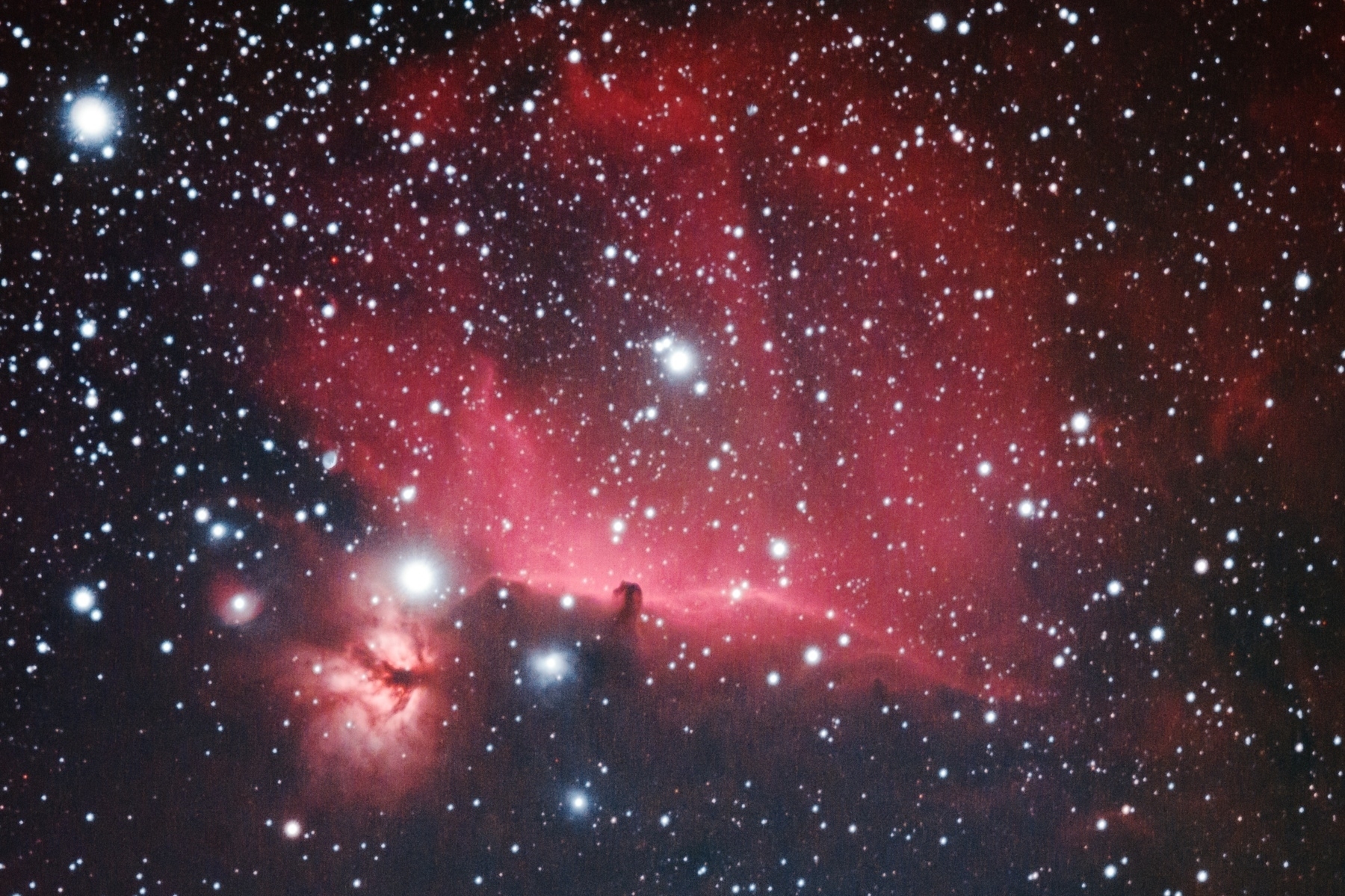Nebulae in Orion
January has been a very cloudy and rainy/snowy month. On a couple of clear nights, there was a big bright moon making it hard to do any deep sky imaging. Finally, last week, we had a clear dark night. I was able to capture two different images in the Orion constellation.
Orion and Running man nebulae
The Orion Nebula (M42) is one of the brightest nebula that is visible to naked eye. It is about 1300 light years away and is a region of massive star formation closest to Earth. There are about 700 stars in various stages of formation within the nebula. (Text paraphrased from Wikipedia.) William Optics ZS61 with Optolong LeNhance narrowband filter
William Optics ZS61 with Optolong LeNhance narrowband filter
 Nikon-Z6 60 x 1min subs; processed with Siril and Photoshop
Nikon-Z6 60 x 1min subs; processed with Siril and Photoshop
Flame and Horse head nebulae
The Horse head nebula (Barnard 33) is about 1300 light years away and is one of the most recognizable dark sky object. As a young boy interested in Astronomy, I was very impressed by Horse head nebula. It is a faint object and I couldn't view with the amateur telescope that I had. At that time I couldn't have imagined that some day I'll be able to take a photo of Horse head nebula. William Optics ZS61 with Optolong LeNhance narrowband filter
William Optics ZS61 with Optolong LeNhance narrowband filter
 Nikon-Z6 41 x 3min subs; processed with Siril and Photoshop
Nikon-Z6 41 x 3min subs; processed with Siril and Photoshop
While capturing these light frames, other calibration frames (bias, dark, and flat) were also collected but, not used while processing to get the images posted here. Planning to reprocess with those calibration frames and see how much difference they make. I also have to learn techniques for star reduction. As can be seen in these images, the stars are getting bloated while stretching the data to bring out the faint objects.

